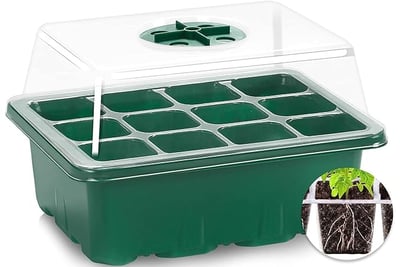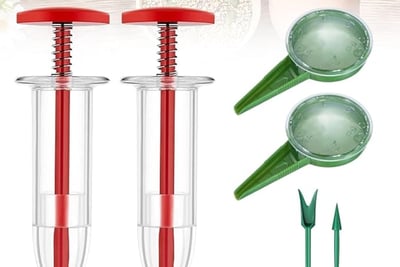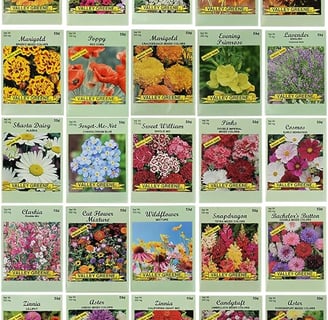Grow Your Own Flowers: A Guide to DIY Bouquets on a Budget
4 min read


Introduction to DIY Flower Gardening
Engaging in DIY flower gardening offers an array of benefits that extend beyond mere aesthetics. One of the most significant advantages is cost-effectiveness. By growing your own flowers, you can significantly reduce expenses associated with purchasing bouquets from florists. With just a modest investment in seeds and soil, you have the opportunity to cultivate a vibrant selection of blooms that can last throughout the season. This approach reduces financial strain while satisfying your decorative needs.
Moreover, cultivating flowers at home fosters a profound sense of personal satisfaction. There is a unique joy derived from nurturing plants and witnessing their growth from seedlings to full-fledged blooms. Each flower arrangement you create is a testament to your efforts, making the end product even more rewarding. The intimacy of crafting your bouquets from home-grown flowers instills a sense of pride that store-bought alternatives simply cannot replicate.
Beyond monetary savings and personal enjoyment, DIY flower gardening is noteworthy for its positive environmental impact. Growing your flowers means you have control over the cultivation process, letting you avoid harmful pesticides and chemicals. This not only benefits pollinators, like bees and butterflies, but also contributes to a healthier ecosystem. Sustainable gardening practices can help mitigate the negative effects of traditional flower production on the environment.
This blog post aims to provide a comprehensive guide for those interested in starting their flower gardening journey. We will explore various flower types suitable for home gardens, essential gardening techniques, and tips for creating stunning floral arrangements on a budget. By the end of this guide, you will be equipped with the knowledge and inspiration to cultivate your own DIY bouquets, merging creativity with ecological mindfulness.
Choosing the Right Flowers for Your Budget
When embarking on the journey of cultivating your own flowers, selecting the right varieties is crucial, particularly if you are operating within a budget. Both annual and perennial flowers can contribute to a beautiful garden while being mindful of costs. Annuals, such as zinnias and cosmos, are perfect for beginners as they bloom abundantly from spring until frost, providing vibrant bursts of color without significant investment. Conversely, perennials like daylilies and coneflowers offer a sustainable alternative, returning year after year, thus reducing long-term expenses.
It is essential to consider your local climate when choosing flowers. Some varieties may thrive in warmer regions while others require cooler temperatures to flourish. For instance, sunflowers and marigolds favor sunny, warm weather, making them ideal for southern climates. In contrast, pansies and snapdragons thrive in cooler areas. Researching hardiness zones will facilitate your selection of well-suited plants, enhancing both their growth and your overall satisfaction with the results.
A vital aspect of budget flower gardening is understanding blooming seasons. Planning for continuous blooming can ensure a steady supply of fresh flowers for your DIY bouquets. For example, consider planting early bloomers like tulips and daffodils alongside midsummer favorites such as hydrangeas and late-season options such as asters. This strategy will help create a vibrant, diverse garden throughout the entire growing season.
To keep costs low when sourcing seeds or starter plants, explore local nurseries, farmers' markets, and community plant swaps. Additionally, purchasing bulk seeds can often yield considerable savings. Ultimately, with careful planning and consideration of flower varieties, you can achieve a flourishing garden of beautiful blooms without overspending, allowing you to create stunning bouquets on a budget.
Essential Tools and Techniques for Flower Growing
Beginning a flower-growing journey requires a selection of essential gardening tools that can enhance the process and ensure successful blooms. For any aspiring gardener, basic implements such as hand trowels, pruning shears, and watering cans form the foundation of flower cultivation. A quality hand trowel assists in digging small holes for planting seeds or bulbs. Pruning shears are invaluable for maintaining healthy plants by enabling precise cuts for deadheading or shaping. Moreover, a sturdy watering can or garden hose is crucial for providing moisture, as proper watering is vital for flower health.
In addition to fundamental tools, specialized equipment can significantly assist in your flower-growing endeavors. For instance, a soil test kit allows for the analysis of soil pH and nutrient levels, which is essential for determining the best amendments for optimal flower growth. Additionally, a gardening fork and rake help in loosening and aerating soil, promoting better root establishment.
When it comes to techniques, beginners can adopt various methods such as direct sowing seeds, planting bulbs, and transplanting seedlings. Direct sowing involves placing seeds directly into prepared soil, which is a straightforward way to establish flowers like sunflowers and zinnias. Alternatively, planting bulbs, such as tulips and daffodils, offers stunning seasonal displays with relative ease. Transplanting seedlings may require more time initially but allows for greater control over plant spacing and health.
To create a flourishing garden, adequate soil preparation is essential, including the incorporation of organic matter to enhance fertility. Furthermore, consistent watering routines ensure that plants receive the hydration they need. Finally, employing integrated pest management strategies—such as using beneficial insects or natural repellents—will safeguard flowers against common pests, empowering gardeners to cultivate beautiful blooms with confidence.
Creating Beautiful Bouquets with Your Home-Grown Flowers
Arranging flowers into stunning bouquets can transform your home-grown blooms into delightful centerpieces for any occasion. To ensure your flowers last and maintain their beauty, it is essential to cut them properly. This involves using clean, sharp scissors or shears, and making cuts at an angle to maximize water uptake. Ideally, flowers should be harvested in the early morning or late evening when temperatures are cooler. This timing helps to preserve moisture in the blooms, allowing them to stay fresh longer.
Mixing and matching different varieties of flowers can create a visually engaging bouquet. Consider using a harmonious color palette by selecting flowers that complement one another. For instance, warm tones can evoke a feeling of warmth and cheer, while cool tones can create a tranquil atmosphere. When combining various types of blooms, pay attention to their shapes and sizes; utilizing a balance of tall, slender flowers and short, bushy ones can add depth and interest to your arrangement.
Foliage and filler plants play a crucial role in enhancing your bouquets. Greenery like ferns, eucalyptus, or even herbs can provide texture and volume, drawing attention to the vibrant colors of your flowers. Additionally, filler flowers such as baby’s breath or lavender can seamlessly fill in gaps, creating a lush appearance that adds richness to your arrangement. The structure of the bouquet should follow a design style, such as a round or cascading format, to ensure visual appeal.
For a thoughtful presentation, consider your wrapping options. Natural materials like burlap, twine, or kraft paper provide a rustic aesthetic, while satin ribbons offer a more sophisticated look. Incorporating personal touches, such as handwritten notes or seasonal themes, can make your bouquets uniquely special. Allow your creativity to flourish as you dive into the art of bouquet making with your home-grown flowers, turning ordinary blooms into extraordinary displays.











